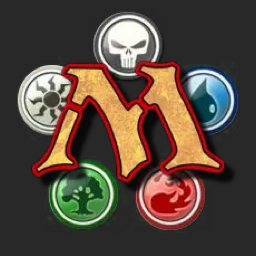I use this site sometimes to find cards that are similar to one another. It’s automated so the comparisons don’t always fulfill the same role but it’s usefully different from lists that are curated by hand like https://www.mythicspoiler.com/. mtgassist.com has a similar feature but I prefer the results from Card Codex.
Compare the results from these two links
https://cardcodex.com/?card=Urborg%2C+Tomb+of+Yawgmoth#search
https://www.mtgassist.com/cards/From-the-Vault-Realms/Urborg-Tomb-of-Yawgmoth/
This is awesome, thanks for the share. I just used this to find Reckless Impulse, I remembered Wrenn’s Resolve but couldn’t remember the earlier one! Will be using this for sure down the line.
Curiously, as another test [[Thran Dynamo]] pulls up [[Ancient Den]] first and then [[Azorius Signet]]. I would’ve expected [[Worn Powerstone]] and similar straight up colorless rocks first. It’s even worse at MTGAssist though, which shows [[Geode Golem]] (??), [[Sol Grail]], and [[Honor-Worn Shaku]] (???) first.
The model certainly has some obvious flaws like you noticed with Dynamo and Powerstone. I don’t think it “counts” words or symbols on cards and it definitely doesn’t have a notion of the “role” a card might play in a deck other than its key words.
I like using it when I have a card that has a niche intersection of mechanics/words and I want to find all the cards that are as similar as possible without manually searching every possible subset of those mechanics or words.
- Thran Dynamo - (G) (SF) (txt)
- Ancient Den - (G) (SF) (txt)
- Azorius Signet - (G) (SF) (txt)
- Worn Powerstone - (G) (SF) (txt)
- Geode Golem - (G) (SF) (txt)
- Sol Grail - (G) (SF) (txt)
- Honor-Worn Shaku - (G) (SF) (txt)
[[card name]] to call
Seems it prioritizes rules text over casting cost. I put in Counterspell and the first page was 100% cards with mv3 or higher. Sometimes having the same mv is more important than having the same rules text, but I guess maybe that wasn’t the goal here.
That’s exactly correct. The similarity model basically ranks the importance of keywords based on how rare they are in the entire body of text. So for Counterspell “target” is pretty much irrelevant because so many things target but “counter” and “spell” are significant because they’re rarer. Then it more or less quantifies the similarity of any two cards by how frequently they use these important keywords.


